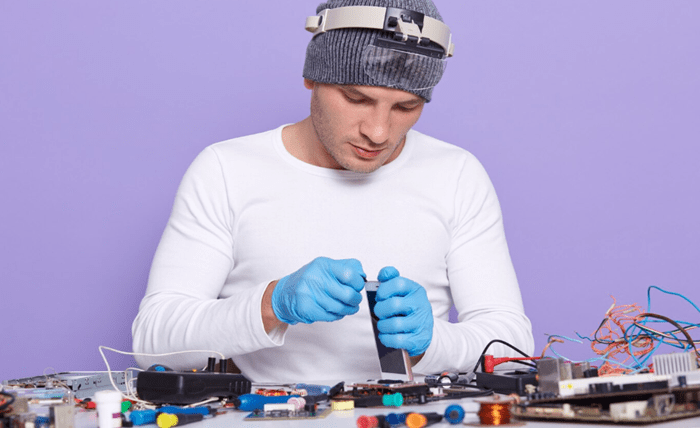Circuit boards are the backbone of electronic devices, ensuring smooth operation and functionality. However, these delicate components are highly susceptible to various forms of damage and wear, including environmental factors, physical stress, and electrical interference. Protecting circuit boards not only extends the life of your electronics but also ensures peak performance. This guide provides practical tips and techniques to safeguard circuit boards effectively, focusing on material choices, environmental protection, and proper maintenance.
Understanding Common Threats to Circuit Boards
To protect circuit boards, it’s essential to identify the common risks they face. Below are the key threats:
Environmental Factors
- Moisture and Humidity: Exposure to water or high levels of humidity can result in corrosion, short circuits, or permanent damage.
- Temperature Extremes: Excessive heat can cause components to overheat or warp, while extremely low temperatures may result in brittle materials.
Physical Damage
Circuit boards can suffer from physical shocks, drops, or vibrations that lead to cracked solder joints or broken components. Improper handling during assembly or repair also poses a significant risk.
Dust and Debris
The accumulation of dirt or particulate matter on circuit boards may lead to electrical interference or even shorts, especially if conductive particles settle in connection points.
Chemical Exposure
Certain chemicals, including acids or cleaning agents, can corrode or degrade delicate materials on the board.
Electrical Surges
Voltage irregularities, lightning strikes, or power surges can all damage delicate electrical components on a circuit board.
By understanding these threats, you can take preventive measures to shield circuit boards effectively.
Practical Tips for Protecting Circuit Boards
Whether in manufacturing, assembly, or daily use, protecting circuit boards requires a proactive approach. Below are the most effective techniques:
Use High-Quality Materials
Selecting the right materials during the design and manufacturing phase determines how well the circuit board can endure exposure to challenging conditions.
- Protective Coatings: Apply conformal coatings to the surface of your circuit boards. These thin layers of protective material shield against moisture, chemicals, and dirt without affecting electrical conductivity.
- Robust Substrates: Choose durable and heat-resistant materials such as FR4 (a composite of woven fiberglass and epoxy). These materials are excellent for minimizing the risk of physical or thermal damage.
- Electronic Encapsulation Epoxy: For more comprehensive protection, use encapsulation techniques to completely seal the board. Electronic encapsulation epoxy provides superior resistance to moisture, extreme temperatures, and physical vibrations. This critical step is widely used for heavily exposed or industrial applications.
Implement Environmental Safeguards
Even with high-quality materials, further measures can be taken to protect circuit boards from environmental factors:
- Enclosures and Casings: Housing the circuit board inside a sturdy, sealed enclosure protects it from physical damage, dust, and water exposure. Materials such as aluminum or ABS plastic are commonly used for these enclosures.
- Temperature Regulation: Use heat sinks, cooling fans, or thermal insulation to prevent overheating in high-demand or high-temperature environments. Ensure proper ventilation within devices to dissipate heat efficiently.
Practice Proper Handling
Handling and storage play an integral role in prolonging the life of circuit boards. Be cautious at every stage, from assembly to maintenance.
- Anti-Static Precautions: Use an anti-static wrist strap or mat when working with boards to prevent electrostatic discharge (ESD), which can damage sensitive components.
- Safe Storage: Store unused boards in anti-static bags or containers away from high-humidity areas. Humidity-control cabinets are ideal for long-term storage.
- Gentle Cleaning: If cleaning is required, use isopropyl alcohol and soft, non-abrasive tools to remove residue or contaminants safely.
Implement Surge Protection
Power fluctuations are a common cause of circuit board damage. Protect against surges by:
- Installing Surge Protectors: Use surge protection devices (SPDs) to shield your electronics from unexpected voltage spikes.
- Stabilizing Power Sources: Invest in uninterruptible power supplies (UPS) or voltage regulators to provide consistent, clean power.
Schedule Regular Maintenance
Performing routine checks and maintenance can help you catch potential issues before they escalate. Here are some practices to incorporate:
- Inspect Solder Joints: Look for cracks or cold solder joints that weaken connections. Re-solder damaged areas if necessary.
- Clean Boards Periodically: Remove dust and dirt buildup at regular intervals using compressed air or ESD-safe brushes. Avoid using water or unknown cleaning substances.
- Check for Signs of Wear or Corrosion: Over time, exposure to environmental stress may lead to discoloration, rust, or damaged components. Timely replacement prevents further damage.
Key Innovations in Circuit Board Protection
The world of electronics evolves rapidly, and so do the methods for protecting circuit boards. Emerging technologies focus on durability and efficiency.
- Nano-Coatings: These ultra-thin protective layers provide the same benefits as traditional conformal coatings with minimal added weight or bulk. Nano-coatings are especially useful for compact electronics.
- Advanced Insulation Materials: Recent developments in thermal barrier innovations allow for more efficient heat dissipation, improving the lifespan of high-performing boards.
- Wireless Monitoring Tools: IoT-enabled sensors embedded on circuit boards can report temperature, voltage, and other metrics in real time, which helps detect early signs of failure.
Conclusion
A proactive approach to protecting circuit boards can significantly improve their lifespan and performance. For optimal results, ensure that you invest in high-quality materials, implement environmental safeguards, handle components properly, and carry out regular maintenance. Whether sealing your boards with advanced coatings, using enclosures, or relying on electronic encapsulation epoxy, these measures go a long way in preventing damage and wear. Implementing these strategies not only secures the integrity of your electronics but also reduces repair or replacement costs in the long term.




